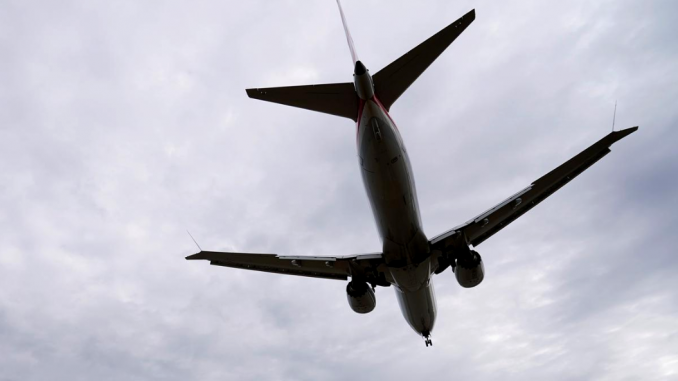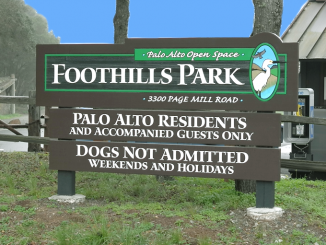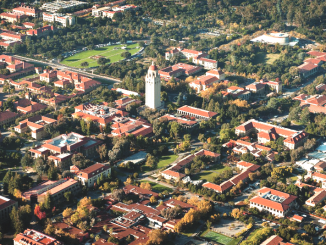
BY ELAINE GOODMAN
Daily Post Correspondent
Changes to a flight path into San Francisco International Airport are adding to concerns about airplane noise in Palo Alto, and the City Council will discuss its next moves on the issue tonight.
The flight path, called Pirat Star Two, is used by flights coming in from the west over the Pacific Ocean. (“Star” stands for Standard Terminal Arrival Route.) The flight path had been restricted to use by certain airlines, but now the Federal Aviation Administration wants to open it up to all flights into SFO — as well as flights into the Oakland airport.
“By opening the procedure to more airlines and/or by expanding its use beyond SFO arrivals to also include OAK arrivals, the volume of air traffic will increase, thereby increasing the noise impacts on Palo Alto and her neighbors,” Mayor Eric Filseth said in a letter to the FAA on March 29.
Another issue for the city is that the FAA hasn’t spelled out what route planes on the Pirat Star flight path would take the rest of the way into SFO after reaching the so-called ARGGG waypoint over the Peninsula. The likely route from the waypoint “would likely direct aircraft over noise-sensitive areas, several wildlife refuges and water storage areas, historic areas, and minority and low-income populations,” Filseth said in his letter.
FAA ignores Palo Alto
The city’s attempts to express its concerns about the Pirat Star flight path with the FAA have not gone smoothly. In a Nov. 13 letter to the agency, then-Mayor Liz Kniss said city officials were troubled that the FAA hadn’t done more to involve the community in proposed changes to the route.
“The city of Palo Alto has also written several letters to the FAA in the past to which the FAA has been completely unresponsive,” Kniss wrote. “We have been left with no viable process for engaging with the FAA regarding the many questions and concerns we have about flight operations in the airspace over our city; this communication vacuum is unacceptable.”
The city also sought environmental documents about the Pirat Star proposal from the FAA, going so far as to file a Freedom of Information Act, or FOIA, request — a tool often used by news reporters to get government records.
City stymied in getting records from FAA
In the March 29 letter from Filseth to the FAA, the mayor asked for an extension of time to comment on the Pirat Star proposal. According to Filseth’s letter, the FAA had agreed to provide the documents requested through FOIA by March 29, which was the deadline for comments. But the city found out that day that there would be a further delay in receiving the records.
The city requested the documents back on Oct. 29. The FAA responded with an “unprecedented request” that the city pay for copying and search fees, “even though we are a public agency which is directly affected by the proposal and we have committed to making the requested information available to the public,” Filseth wrote.
The city agreed to pay the fees. It was unclear yesterday whether Palo Alto was still waiting for the requested information.
However, the FAA on April 25 formalized the Pirat Star route by publishing it. The question now for the city is whether that move can be considered an order of the Secretary of Transportation. If so, the city would have 60 days to ask for a court to review the order, according to the “airplane noise” section of the city’s website.
Years of noise complaints
Residents have complained to the council about airplane noise for years. During an April 2018 meeting, some said plane noise wakes them up every night or forces them to wear noise-canceling headphones in their homes. During that meeting, the council decided not to sue the FAA over airplane noise.
A report to the council from City Manager Ed Shikada for tonight’s meeting outlines some of the other actions the city has taken in regard to airplane noise.
In August, the council voted to have the city join the Santa Clara/Santa Cruz Airport/Community Roundtable which focuses on airplane noise. The new group has met three times so far. Its next meeting is scheduled for Wednesday at 1 p.m. in Santa Clara City Council Chambers.
The city has also joined the National Association to Insure a Sound Controlled Environment, or NOISE, which advocates at the federal level for reducing the community impacts of airplanes.
Palo Alto hired lobbyists to advocate for adding noise provisions to the recent FAA Reauthorization bill. But those amendments weren’t included in the final version of the bill, Shikada said.
The city also worked with SFO to install temporary noise monitors at four locations from late October to late December. The city is waiting to receive an analysis of the results from an SFO consultant.
Only a fraction of the local news stories covered by the Daily Post appear on this website. To get all the local news, including many stories you can’t find online, pick up the Post every morning at 1,000 Mid-Peninsula locations.




Thank you for the well written and timely article of interest to the community. It also helped inform many people to attend the Council meeting and speak.